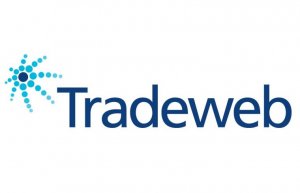“Dark pool” case against Barclays continues, as plaintiffs prepare notices to class members
Barclays is alleged to have issued misstatements concerning the operation of its dark pool, known as Liquidity Cross or LX.

The “dark pool” case against Barclays PLC (LON:BARC), its United States subsidiary Barclays Capital Inc. and William White, former Head of Equities Electronic Trading at Barclays Capital and currently the Managing Director and Head of Product Development and Platforms for Markets, within the Investment Bank at Barclays, continues at the New York Southern District Court.
Earlier today, the lead plaintiffs in the action – Mohit Sahni and Joseph Waggoner, filed a number of documents that aim to give notice to potential class members of the pendency of this action.
If one has purchased Barclays plc American Depository Shares (ADSs) during the period of August 2, 2011 through June 25, 2014, both dates inclusive (the Class Period), he/she may be a member of the Class.
The notice to potential class members offers a summary of the action. It restates allegations made in the Second Amended Complaint, according to which, during the Class Period, the defendants issued misstatements concerning the operation of Barclays’ dark pool, known as Barclays’ Liquidity Cross or LX. More particularly, the Complaint alleges that Barclays continuously misled investors by touting LX as a safe trading venue “built on transparency,” with “built in safeguards to manage toxicity of aggressive traders” who could victimize other dark pool investors by trading ahead of anticipated purchase and sell orders, thereby rapidly capitalizing on proprietary information regarding trading patterns.
The Complaint also says that Barclays touted its Liquidity Profiling tool, which Mr White (who managed the business unit that operated LX) described, as “a sophisticated surveillance framework that protects clients from predatory trading activity in LX.”
The Complaint further alleges that Barclays failed to disclose that it did not in fact effectively protect LX clients from predatory trading with Liquidity Profiling partly because Barclays applied manual overrides to move “aggressive” clients to more “passive” categories, failed to police LX to prevent/punish toxic trading, intentionally altered marketing materials to omit reference to the largest predatory high frequency trader in LX, preferentially routed dark orders to LX where those orders rested for two seconds seeking a “fill” vulnerable to toxic traders, and did not include the NYSE and EDGX direct feeds to construct the national best bid and best offer (“NBBO”) used to update the prices of orders resting in LX.
According to the Complaint, investors learned the truth on June 25, 2014, when the New York State Office of the Attorney General commenced a lawsuit against Barclays over misrepresentations regarding the operation of LX. The Complaint alleges that after the announcement of the NYAG’s action, Barclays’ ADS fell 7.38% on June 26, 2014.
The defendants have denied all claims and wrongdoing asserted in the complaint and any liability arising out of the conduct alleged therein. Specifically, among other defenses, Barclays contended that the alleged misstatements in the Complaint were immaterial and that it had no duty to disclose the allegedly omitted information.
No trial has yet occurred in this Action, the notice to class members says, and no findings of fault or liability have been made as to any of the parties. There is no assurance that a judgment in favor of the Class will be granted.
Those who fit the description of a Class Member, have a choice whether or not to remain members of the Class. Those who wish to remain a Class Member are not required to do anything at this time. Those willing to be excluded will have to state so in writing.
Mohit Sahni and Joseph Waggoner today moved the Court for for an order establishing the program and schedule for notice to the Class of this pending class action. Under the proposed program, Class Counsel shall cause to be mailed, by first class mail, the individual Notice of Pendency of Class Action to all class members who can be identified through reasonable effort within 20 calendar days after the date of production of the class member identification records.
The case is captioned Strougo v. Barclays PLC et al (1:14-cv-05797).









